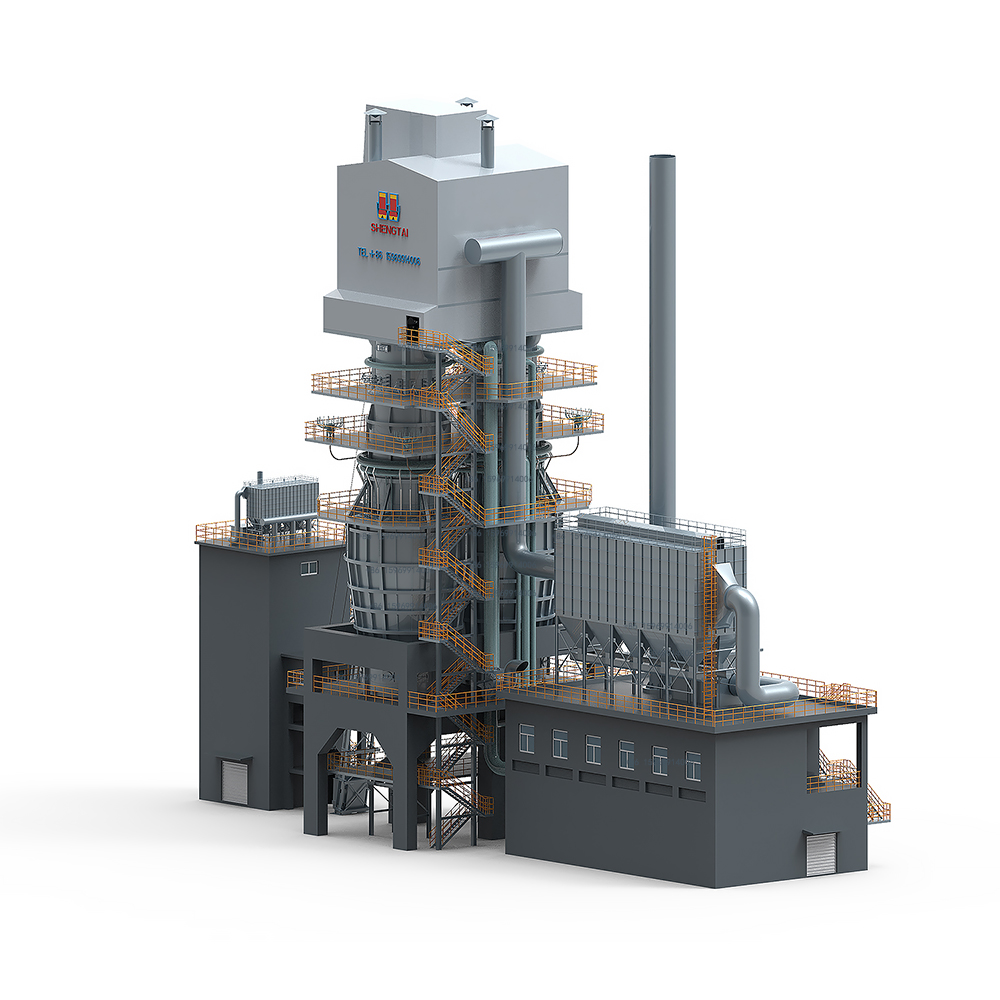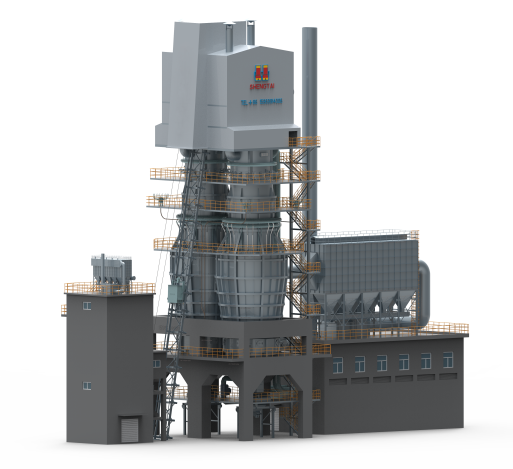DualFlux™ Regenerative Shaft Kiln with 3-Zone Optimization
Structural Features of Regenerative Shaft Kilns
- Dual-Chamber Design: The kiln comprises two chambers interconnected at the lower section via a dedicated structure. During calcination in one chamber, high-temperature exhaust gases pass through the bottom connection into the opposing chamber to exchange heat with limestone.
- Cylindrical Chamber Geometry: Both chambers feature a circular cross-section for optimal gas and material flow dynamics.
- Three-Zone Vertical Division:
- Preheating Zone: Extends from the top to the lower end of the fuel lances.
- Calcination Zone: Located between the bottom connection channel and the lower end of the lances.
- Cooling Zone: Spans from the connection channel down to the cooling air cap.
- Alternating Regenerative Operation: Unique to this kiln type, high-temperature exhaust gases undergo thorough heat exchange with limestone across the entire chamber height, maximizing thermal recovery.
- Co-current Calcination Compliance:
- Matches limestone decomposition requirements with large initial temperature gradients (high heat flux at the calcination start) and small final gradients (gentle completion).
- Maximum heat release occurs at the calcination zone’s upper section, where high gas-material temperature differences enable rapid initial heating. As materials and gases flow co-currently downward, heat absorption decreases gradually, ensuring complete calcination without over-burning.
- Lance Configuration:
- Multiple fuel lances are uniformly distributed across each chamber’s cross-section.
- Individual lance fuel supply can be adjusted for localized temperature control.
- Cooling System: Air is injected at the cooling zone base to lower finished lime temperature to 80–100°C.
- Automated PLC Control: The kiln operates via a PLC system that automatically adjusts parameters (e.g., fuel flow, air supply) based on preset values, ensuring high-precision process management.



